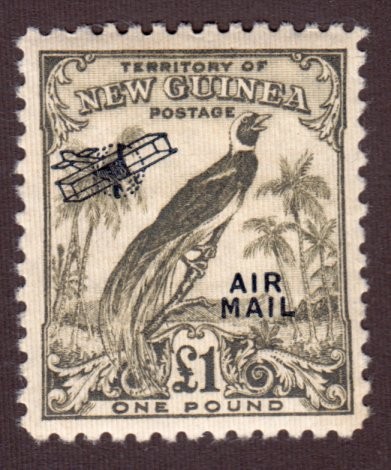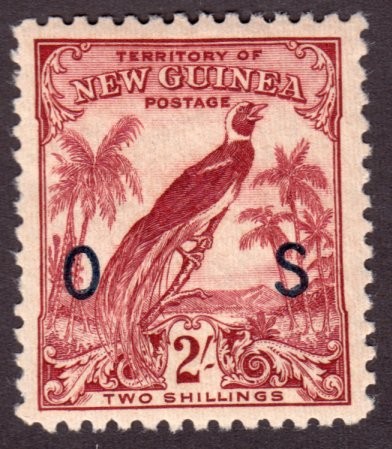
Discussion - Member to Member Sales - Research Center

Discussion - Member to Member Sales - Research Center

I am in the habit therefore of checking this with a short wave lamp in a completely blacked out room and looking for the afterglow when I switch off the light, however.....
...trying to save time I recently took a short cut and checked a batch of stamps in a less than completely dark room - a sort of "twilight zone".
One stamp stood out. Although the afterglow was standard for a 2x9.5mm band stamp, while the stamp was being excited by the u/v the right hand band showed up as approximately double the width ( with a dead straight edge like a band should have). However lacking the afterglow it cannot be phosphor. The only explanation I can put forward is that it is a misplaced 4mm varnish strip immediately to the left of ( or overlapping) the right hand band.When shining the light in the completely dark room you cannot see this ( nor in fairness can you detect the phosphor until the lamp is switched off).
I have never heard of such a phenomenon before, and there may of course be a completely different explanation. Does anyone have a definitive ( groan !) explanation ?
Thank you in advance.
Malcolm

Login to Like
this post
can you show a LWUV photo ?
 deegam.com
deegam.com
 sgsv4-2 2008
sgsv4-2 2008

Login to Like
this post

03:22:11am
If ever there was a good example of the benefit
of the DCMH (Deegam Complete Machin handbook )
this it it.
Not only is a listing for an obscure varient
in Volume II, but in Volume I there is a detailed
explaination.

Login to Like
this post
I am not technically savvy enough to deal with uv photography.
As far as I can see none of the cases on the table fit the appearance of my stamp. There is no missing phosphor as the afterglow is normal. The additional non-phosphor reaction is immediately to the left of the right hand band.
I admit to not having looked at it under LW light, as other than distinguishing PCP and ACP or OCP v.PCP papers I have not not known any other use.Most of my Machins are from the 60s and 70s and the modern use of lw light is inappropriate. I will try that.
The strange thing is that in the "twilight" setting the whole right hand band appears homogenous, yet in complete darkness the left hand side (of the right band) is totally invisible AND without afterglow.
Funnily enough I found this completely by accident - doing things wrong.
I am now going to try to experiment on my many thousand duplicate 9p stamps to see if I can replicate the effect. I will keep you informed.
Incidentally I find myself completely unable to identify 2mm and 4mm varnish over the phosphor bands. All my stamps are used and wonder if distinguishing them is only possible on mint stamps.
Malcolm

Login to Like
this post
9P VIOLET is challenging study ... I look forward to your comments

Login to Like
this post
I have had another look at this at 4 am today in subdued light and it is most strange.
Under exposure to Long Wave light which of course does not show the phosphor ( except as an afterglow ),there is a definite regular shaped "stripe" left of where the right hand is.
As in my original post I thought that this might be a misplaced band of varnish (over the ink but under the phosphor ) I have a possible alternative. Being that this stripe is I estimate the width of half a phosphor band ( give or take 4.75mm), I wonder if this could be a broad varnish band right ( in the same way that there are broad phosphor bands on the 2p for example) and the other 4,75mm is being masked by the right phosphor band.
Regrettably this is a less than pristine used copy, and a single - a horizontal pair would give,I feel a definitive ( pun! ) answer. Without gum on a mint stamp, I am unable to distinguish varnish by the backlight test recommended by the Connoisseur Catalogue.
As far as the varnish in general is concerned I am struggling to distinguish the varnish under ink from the phosphor under ink ( which I thought I had sussed until this case arose). I am beginning to think that I don't have the mental acuity to study these stamps!
Malcolm

Login to Like
this post

01:51:59am
" .... I am beginning to think that I don't have the mental acuity to study these stamps! ...."
I have heard that suggested by many people about Machinistas.

Login to Like
this post
It has been noted before: sometimes the phosphor bands show very little to no afterglow. On used stamps it may even be the case that the luminescent components have been washed out. However, two different phosphors on the same stamp seem unlikely. Another possible explanation is some chemical interaction with the glue of a tape that might have been placed over the stamp, and was soaked off.
-jmh

Login to Like
this post
inks like paint change viscosity if left alone ... I have found many "varnish band" vars.
in daylight they show clearly, but under LW uv inspection, no flour-phos reaction.
same on most forgeries...

Login to Like
this post
07:45:16am
As many collectors will realise, the fact that this stamp has a graduated background means that the right hand band is often indistinct in natural light, even when viewed at the recommended angle.
I am in the habit therefore of checking this with a short wave lamp in a completely blacked out room and looking for the afterglow when I switch off the light, however.....
...trying to save time I recently took a short cut and checked a batch of stamps in a less than completely dark room - a sort of "twilight zone".
One stamp stood out. Although the afterglow was standard for a 2x9.5mm band stamp, while the stamp was being excited by the u/v the right hand band showed up as approximately double the width ( with a dead straight edge like a band should have). However lacking the afterglow it cannot be phosphor. The only explanation I can put forward is that it is a misplaced 4mm varnish strip immediately to the left of ( or overlapping) the right hand band.When shining the light in the completely dark room you cannot see this ( nor in fairness can you detect the phosphor until the lamp is switched off).
I have never heard of such a phenomenon before, and there may of course be a completely different explanation. Does anyone have a definitive ( groan !) explanation ?
Thank you in advance.
Malcolm

Login to Like
this post

re: 9p Blue Machin anomaly?
can you show a LWUV photo ?
 deegam.com
deegam.com
 sgsv4-2 2008
sgsv4-2 2008

Login to Like
this post
Silence in the face of adversity is the father of complicity and collusion, the first cousins of conspiracy..
09 May 2018
03:22:11am
re: 9p Blue Machin anomaly?
If ever there was a good example of the benefit
of the DCMH (Deegam Complete Machin handbook )
this it it.
Not only is a listing for an obscure varient
in Volume II, but in Volume I there is a detailed
explaination.

Login to Like
this post
04:58:47am
re: 9p Blue Machin anomaly?
I am not technically savvy enough to deal with uv photography.
As far as I can see none of the cases on the table fit the appearance of my stamp. There is no missing phosphor as the afterglow is normal. The additional non-phosphor reaction is immediately to the left of the right hand band.
I admit to not having looked at it under LW light, as other than distinguishing PCP and ACP or OCP v.PCP papers I have not not known any other use.Most of my Machins are from the 60s and 70s and the modern use of lw light is inappropriate. I will try that.
The strange thing is that in the "twilight" setting the whole right hand band appears homogenous, yet in complete darkness the left hand side (of the right band) is totally invisible AND without afterglow.
Funnily enough I found this completely by accident - doing things wrong.
I am now going to try to experiment on my many thousand duplicate 9p stamps to see if I can replicate the effect. I will keep you informed.
Incidentally I find myself completely unable to identify 2mm and 4mm varnish over the phosphor bands. All my stamps are used and wonder if distinguishing them is only possible on mint stamps.
Malcolm

Login to Like
this post

re: 9p Blue Machin anomaly?
9P VIOLET is challenging study ... I look forward to your comments

Login to Like
this post
12:17:31am
re: 9p Blue Machin anomaly?
I have had another look at this at 4 am today in subdued light and it is most strange.
Under exposure to Long Wave light which of course does not show the phosphor ( except as an afterglow ),there is a definite regular shaped "stripe" left of where the right hand is.
As in my original post I thought that this might be a misplaced band of varnish (over the ink but under the phosphor ) I have a possible alternative. Being that this stripe is I estimate the width of half a phosphor band ( give or take 4.75mm), I wonder if this could be a broad varnish band right ( in the same way that there are broad phosphor bands on the 2p for example) and the other 4,75mm is being masked by the right phosphor band.
Regrettably this is a less than pristine used copy, and a single - a horizontal pair would give,I feel a definitive ( pun! ) answer. Without gum on a mint stamp, I am unable to distinguish varnish by the backlight test recommended by the Connoisseur Catalogue.
As far as the varnish in general is concerned I am struggling to distinguish the varnish under ink from the phosphor under ink ( which I thought I had sussed until this case arose). I am beginning to think that I don't have the mental acuity to study these stamps!
Malcolm

Login to Like
this post
Silence in the face of adversity is the father of complicity and collusion, the first cousins of conspiracy..
19 Jun 2018
01:51:59am
re: 9p Blue Machin anomaly?
" .... I am beginning to think that I don't have the mental acuity to study these stamps! ...."
I have heard that suggested by many people about Machinistas.

Login to Like
this post

re: 9p Blue Machin anomaly?
It has been noted before: sometimes the phosphor bands show very little to no afterglow. On used stamps it may even be the case that the luminescent components have been washed out. However, two different phosphors on the same stamp seem unlikely. Another possible explanation is some chemical interaction with the glue of a tape that might have been placed over the stamp, and was soaked off.
-jmh

Login to Like
this post

re: 9p Blue Machin anomaly?
inks like paint change viscosity if left alone ... I have found many "varnish band" vars.
in daylight they show clearly, but under LW uv inspection, no flour-phos reaction.
same on most forgeries...

Login to Like
this post



